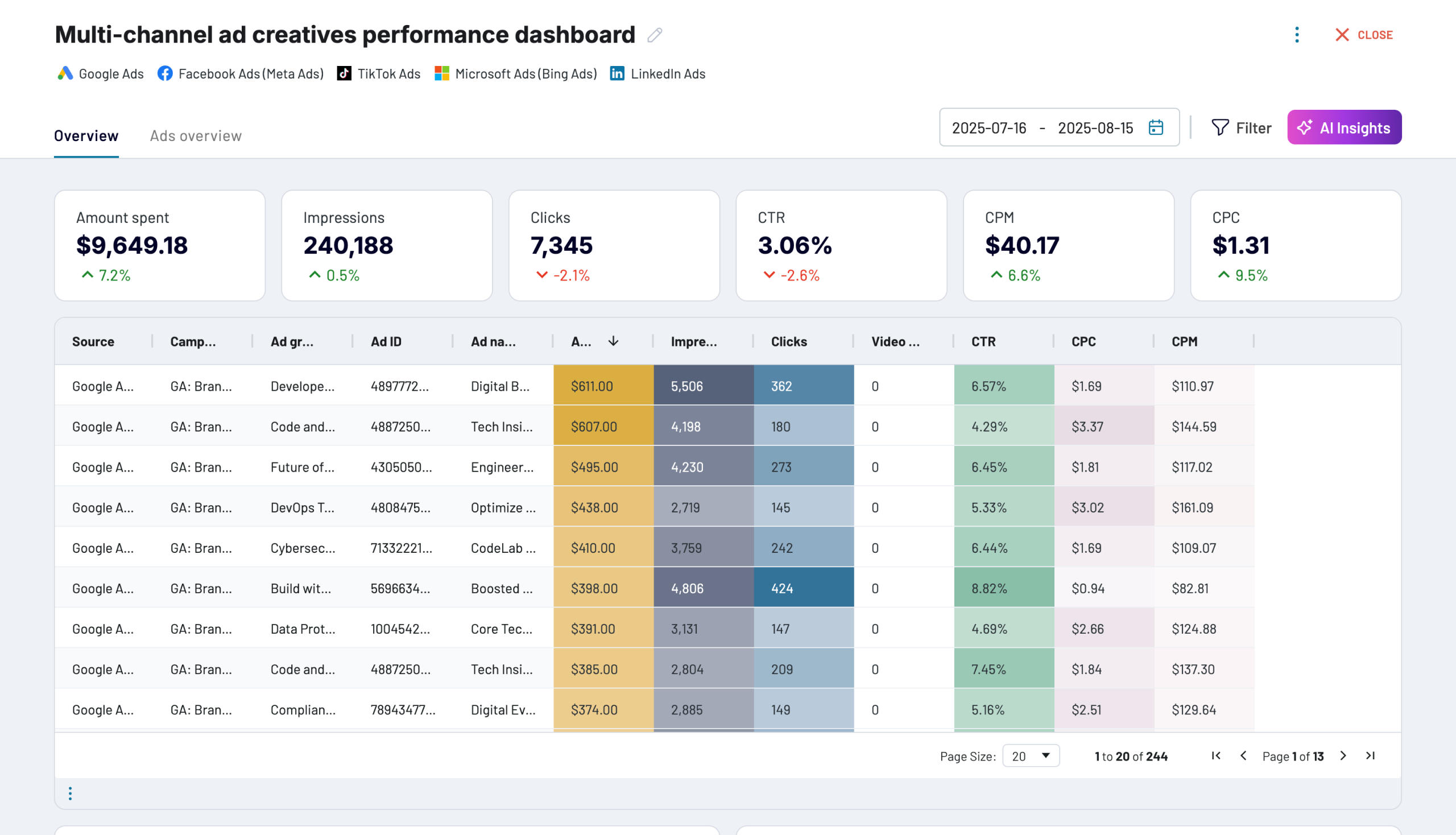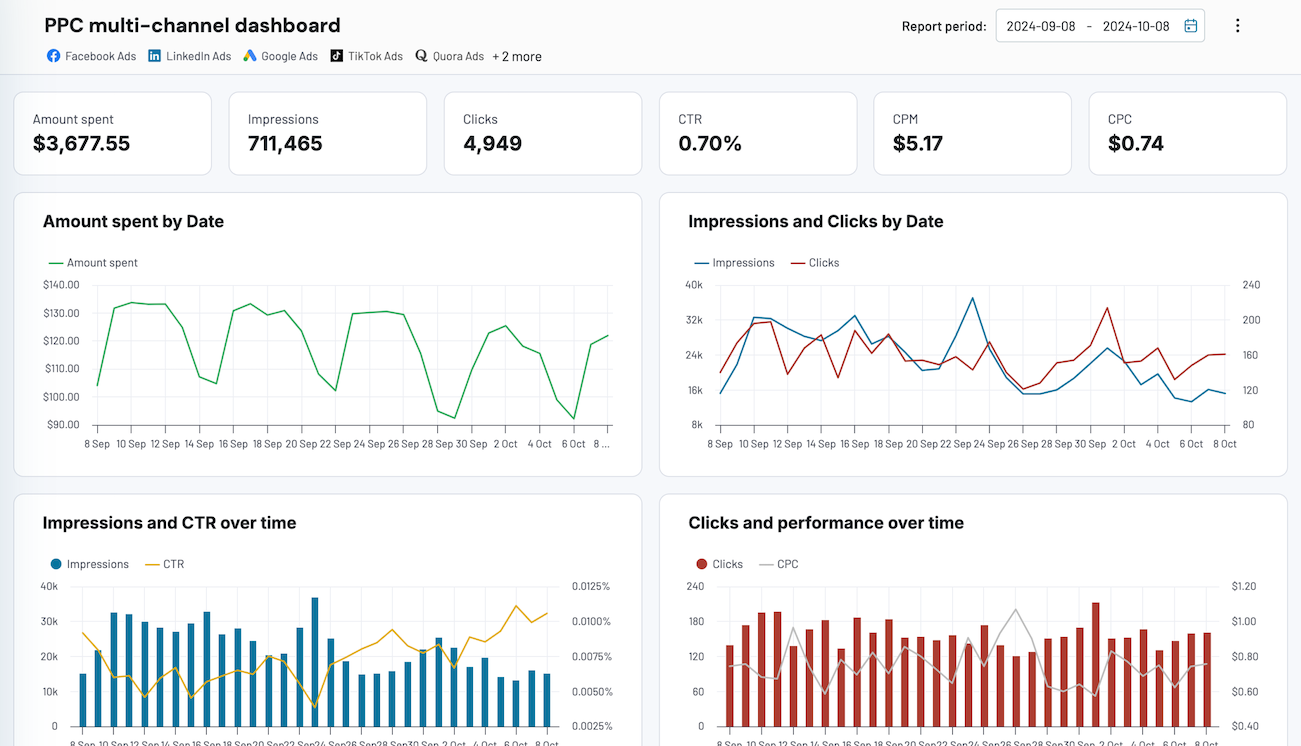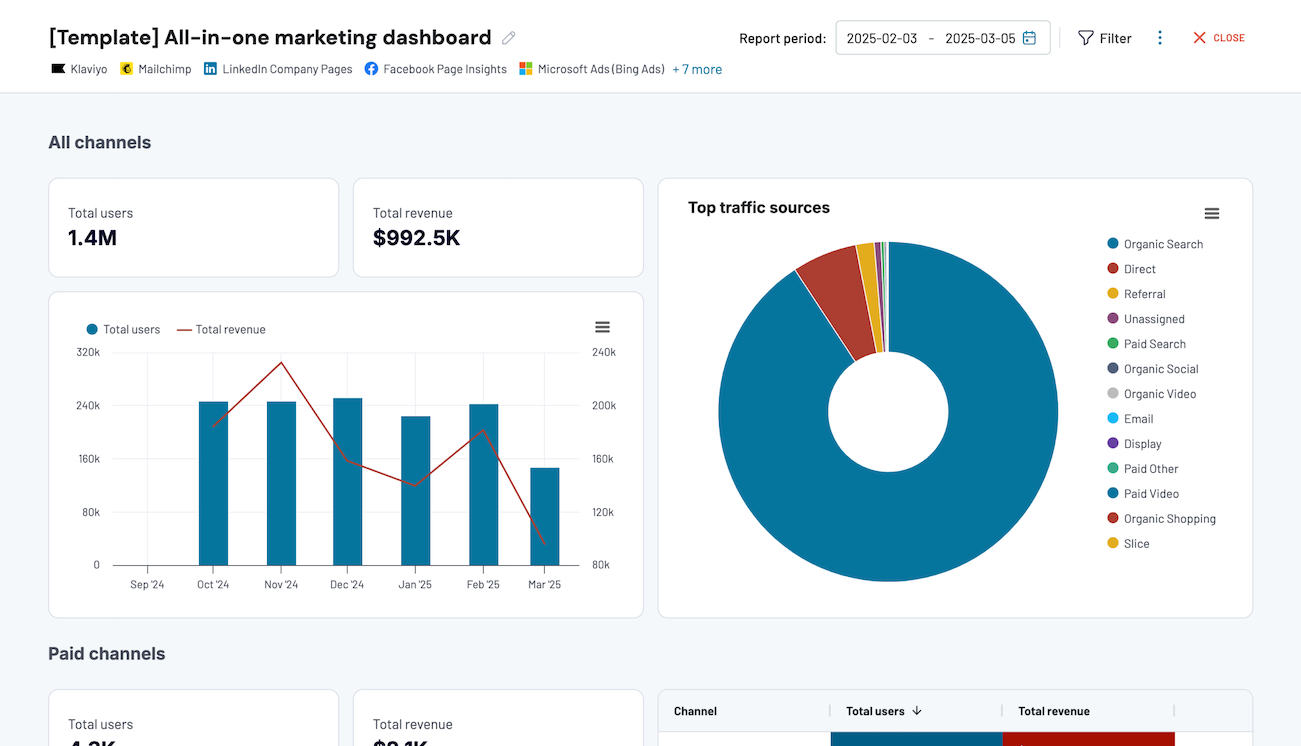What is a MRR?
Monthly recurring revenue (MRR) is a critical metric for businesses with subscription-based models. It measures the total predictable revenue generated each month from all active subscriptions. Understanding MRR is essential because it provides a clear view of income stability and growth trends, helping in forecasting and strategic planning. By analyzing MRR, marketers can identify which products or services are performing well and which may need promotional boosts or adjustments. MRR optimization involves increasing the customer base, improving retention rates, and upselling existing customers. Effective management of MRR can lead to more efficient allocation of marketing resources, better customer relationship management, and, ultimately, enhanced business sustainability.
How to calculate MRR?
To calculate monthly recurring revenue (MRR), multiply the total number of paying customers by the average revenue per user (ARPU). The formula is MRR = number of customers x average revenue per user. This calculation provides a snapshot of the expected monthly income from subscriptions.
Our key templates to track MRR
































about your case. It doesn't cost you a penny 😉



